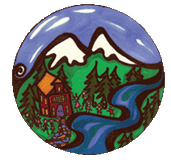Areas of our Classroom: Practical Life
In her book, The Absorbent Mind, Dr. Maria Montessori wrote, “To have a vision of the cosmic plan, in which every form of life depends on directed movements which have effects beyond their conscious aim, is to understand the child’s work and be able to guide it better.” Today we’re going to focus in on the practical life area of our classroom so that you may better understand the work of our students.
Practical life materials lay the foundation for all of your child’s future work in the Montessori classroom and beyond. These lessons focus on real-life skill building, and the development of concentration, coordination of movement, and independence. Additionally, this is where children begin building concentration for more advanced work, fine motor skills for writing, and much more.
Fundamental work takes place in the Avenue of Practical Life in a Montessori classroom. It is comprised of lessons that enable children to practice and master basic life skills (pouring, squeezing, twisting, etc.) that contribute to a successful, independent future. Each Practical Life lesson falls under one of the four main areas:
1) Control of Movement
2) Care of Person
3) Care of Environment
4) Grace and Courtesy
A typical practical life area of a Montessori classroom at the beginning of the school year will have basic dry pouring lessons, such as pouring beans from one pitcher into another. It will have spooning and squeezing lessons where children use spoons and tongs to transfer materials. The care of self area will have dressing frames, which allow children to practice tasks that are essential to their independence, such as mastering buttons or zippers. The care of environment area will include brooms, sweepers, dusters, towels, and sponges. This area allows children to take care of their school and clean up after themselves and their friends. Finally, grace and courtesy lessons are a general part of our day-to-day life in our classroom. We practice greetings at circle time, such as shaking hands or waving hello, in addition to using kind and polite manners between all teachers and students.

